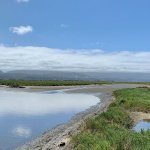Extending from the Sierra Nevada to the east and the Coast Ranges to the west, California’s Central Valley in the United States is a broad expanse of land. It is one of the world’s most productive agricultural regions, producing 40% of the United States’ fruits, nuts, and other table foods. Before the land and water here was used to feed millions of people around the world, it provided home and stopover for millions and millions of migratory birds. Designated in 1992, the Grassland WHSRN site is one of the last remaining patches of protected lands in the southern Central Valley, where 76% of the nearly 200,000 acres of public refuges and private lands are reserved for wildlife through conservation easements.
A great diversity of shorebird species can be found in the Grassland. Key species include Long-billed Dowitcher, Black-necked Stilt, Dunlin, Least Sandpiper, and Western Sandpiper. Wetlands are the key habitat at this site and uplands and grazing lands also provide habitat for many wintering Long-billed Curlew. The Grassland is also a critically important wintering area for Pacific Flyway waterfowl, with annual numbers of over a million.
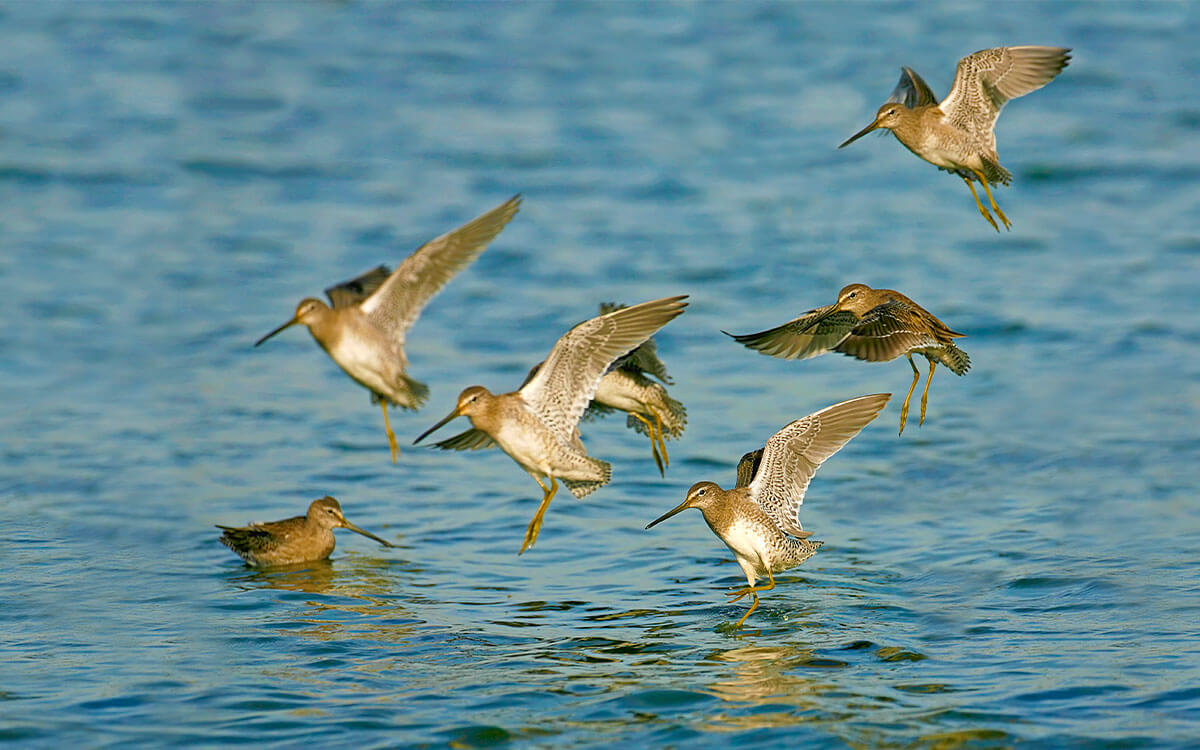
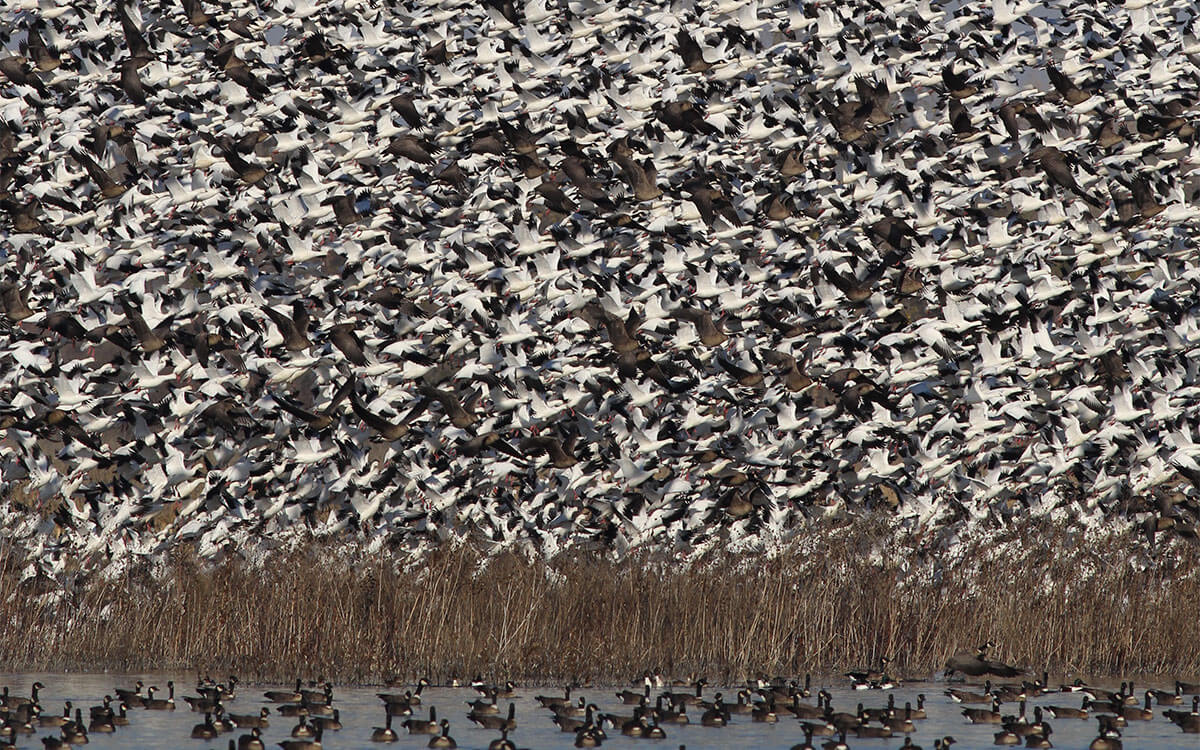
Left: Short-billed Dowitchers. Photo: Gary Kramer. Right: The skies of The Grasslands are often filled with massive flocks of waterfowl, like these Snow Geese.
Protected lands prevent wetland loss
With only 5% of California’s wetlands remaining, there is a great need to maximize the productivity of the remaining habitat and ensure that it provides for the hundreds of species it hosts each year. The Grassland WHSRN site includes state, federal, and private lands. State Wildlife Areas and National Wildlife Refuge lands are managed for waterfowl, waterbirds, and shorebirds; a diversity of water depths, open habitats, and native vegetation are available year-round. However, public lands are only a small portion of the wetlands, with two-thirds of the remaining wetlands occurring on privately owned duck clubs.
The good news is that 90% of those private wetlands have conservation easements with the USFWS and are protected from development in perpetuity. “These easements are the Fish and Wildlife Service’s largest consolidated easement surrounding refuge lands in California. Birds don’t follow refuge boundaries and need full use of the area, making habitat protection and management on private lands essential,” says Bob Parris, Deputy Refuge Manager, San Luis National Wildlife Refuge Complex.
Traditionally, duck clubs move water onto their lands in September to provide overwintering habitat during peak waterfowl migration. This water is then drawn down in March to create optimal germination conditions for waterfowl food crops. However, shorebirds need wetlands with shallow water through April, the peak of their spring migration season in this region.
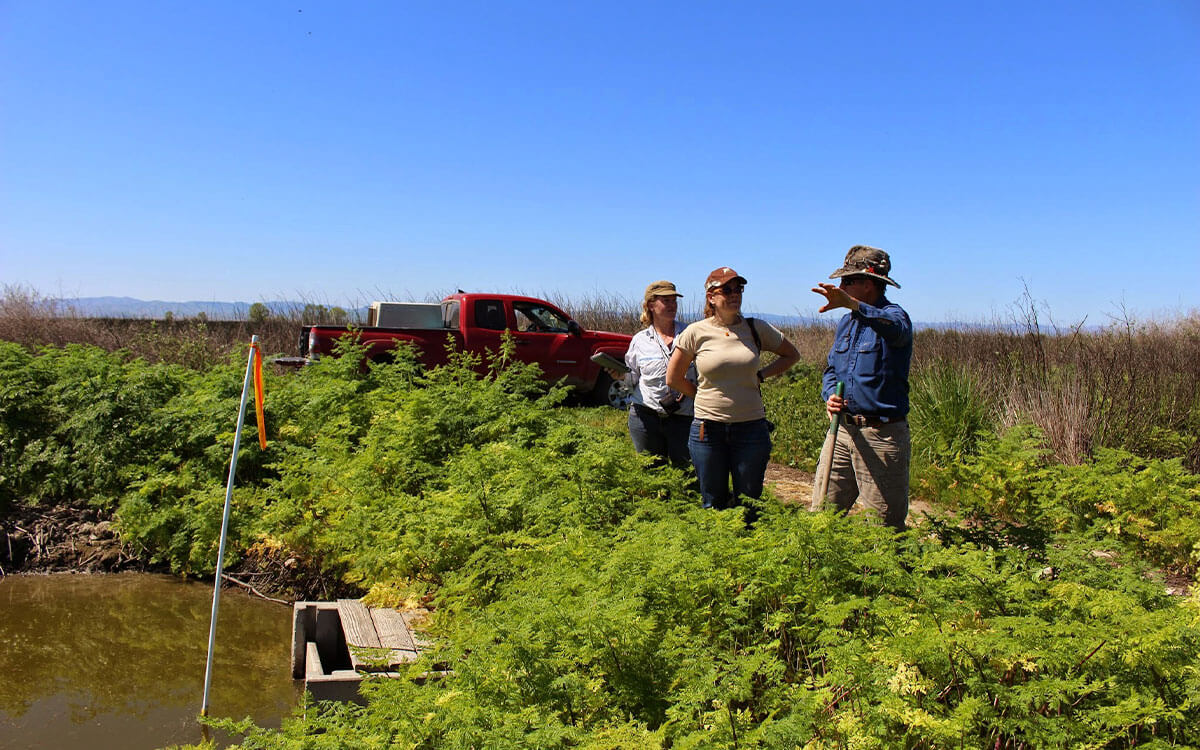
Audubon California and The Nature Conservancy discussing options for water management with a private wetlands water manager.
Shorebird habitat on private lands
Seeing a need to diversify habitat availability for shorebirds, Audubon California, The Nature Conservancy, and Point Blue Conservation Science sought to collaborate with the private wetland owners on alternative management practices. In 2015, they launched a program to provide funds to landowners to keep water on their wetlands through March and gradually draw down during April. In the first year, 1,500 acres enrolled in the program; over the next three years (2016-2018), nearly 3,000 more acres enrolled.
The Grassland Water District is responsible for delivering water to the majority of the public and private refuge lands in the area. It played a crucial role in the program by recruiting, planning, and supporting the duck clubs that participate. Ric Ortega, General Manager for the Grassland Water District, reports that although the delayed gradual drawdowns may impact waterfowl food crops over time, wetland managers can reduce potential impacts by rotating which wetlands are enrolled each year.
For shorebirds, the program works. Over a 3-year study, 96% of shorebirds were found in enrolled wetlands. Species diversity and density were all higher on enrolled wetlands. Additionally, enrolled wetlands provided two times more habitat as unenrolled wetlands and contributed up to 26% of the shorebird habitat objective for the Central Valley (Souza-Cole et al. 2020; CVJV 2020). The program was also popular among duck clubs, with a waitlist to participate.
Unfortunately, the funding for this incentive-based program is currently not available for this region. Partners have shifted focus with the funding and brought the program to another WHSRN site – Sacramento Valley – where they will again collaborate with private landowners to extend the time that wetlands are holding water during spring migration.
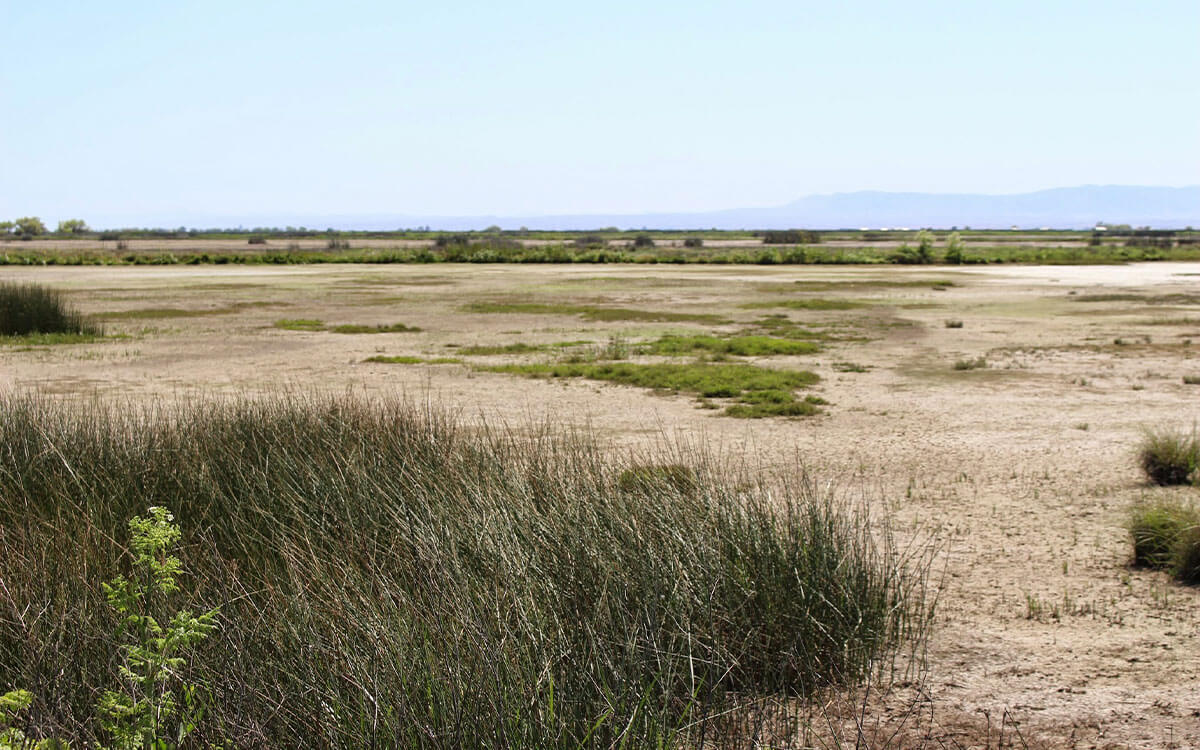
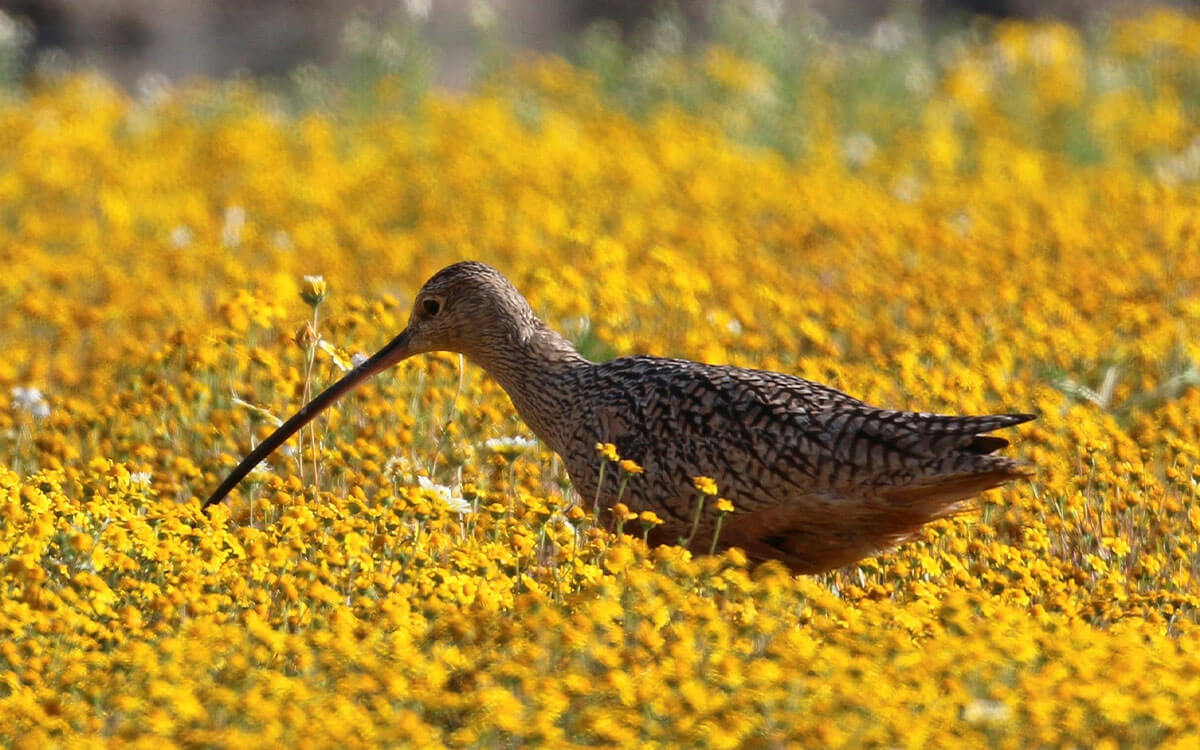
Left: Dry wetlands, waiting for water and birds. Photo: K. Strum. Right: Long-billed Curlew. Photo: Gary R Zah.
Wildlife habitat in years of drought
Balancing water use and habitat availability is even more challenging in an extreme drought year, like the western United States has this year. The Grassland Water District expects to receive less than half of the normal amount of water for the next two years. While some water might normally go to wetlands in August, the dry soil and summer evaporation will quickly consume any applied water. To avoid loss of the already limited supply, many wetland managers will delay flood up and will only maintain that habitat through the winter. As a result, many shorebirds will be without water during their August and September migration.
The Grassland wetlands are luckier than many other WHSRN sites in the western United States; this site has a strong federal surface water supply. Additionally, groundwater resources can be used to supplement when surface water is limited. To address the 2021 drought emergency, the Migratory Bird Conservation Partnership reached out to the Grassland Water District board of directors to consider providing additional critical shorebird habitat in August and September. The Grassland board directed staff to see if additional funding could be made available from the Bureau of Reclamation to acquire more groundwater for early wetland habitat. Fortunately, the Bureau of Reclamation was able to identify additional funding and wetland managers were willing and ready to begin flooding over 2500 acres of habitat this August and September.
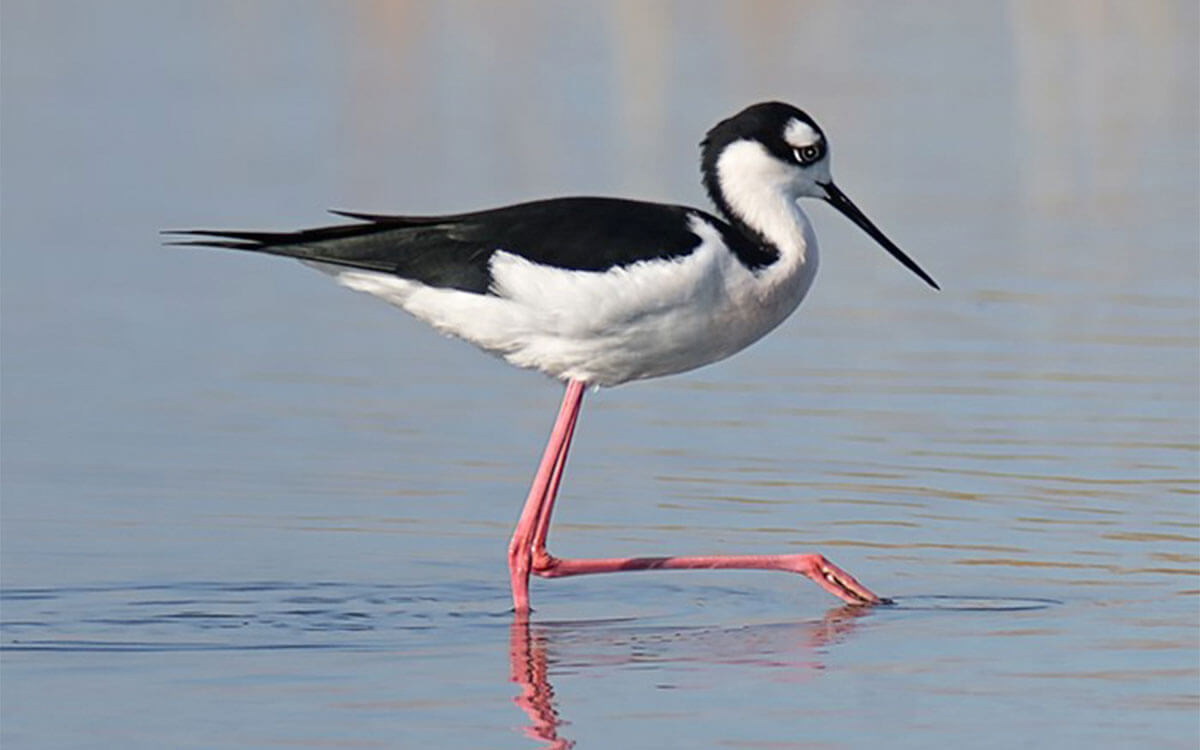
Black-necked Stilt. Photo: James Sanderson.
“Like people, wildlife depend on fresh water everyday but unfortunately in drought years like this wetland managers have to make tough decisions, and sometimes there are sacrifices for the greater good,” says Ortega. “But we remain focused on growing our water supply and meeting the needs of as many migratory birds for as long as we can each year.”
Water availability will always remain the greatest threat in this region, but there is still an ever looming threat of development and conversion of wildlife beneficial open lands. Currently, there is the threat of a high-speed rail that would bisect the Grassland. But public-private partnerships like this will ensure that management strategies are discussed, water availability is coordinated, and habitat for migratory birds is protected. “It feels great to see partners coming together, particularly in this time of drought, to find ways to stretch water and provide this habitat these birds so need,” says Xerónimo Castañeda, Conservation Project Manager, Audubon California.
Cover Photo: Wetland at The Grassland WHSRN site. Photo: K. Strum.






